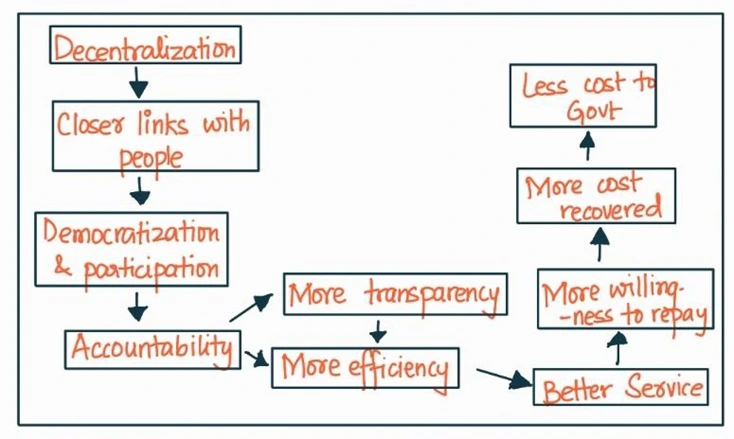Answer:
| Approach:
Introduction
- Introduce the topic by briefly discussing the bifurcation of geographical administrative areas such as districts and talukas, and the broader question of whether the creation of smaller states can lead to effective governance.
Body
- Discuss the potential advantages of creating smaller states.
- Discuss the potential disadvantages or challenges of creating smaller states.
Conclusion
- Conclude, writing the key to effective governance lies in decentralization and devolution of powers to local bodies, irrespective of the size of the state.
|
Introduction:
The reorganization and bifurcation of administrative areas have been ongoing processes in India since independence, aimed at improving governance and administrative efficiency. While the bifurcation of districts and talukas is a common practice at the local level, the creation of smaller states is a much-debated topic in India’s political and administrative discourse.

Body:
Arguments for Smaller States:
- Administrative Efficiency: Smaller states can potentially bring in effective governance due to better administrative manageability and closer interaction between the government and the people. For example, the creation of Uttarakhand from Uttar Pradesh has been seen as a positive step, as it has brought about improvements in governance and development indicators.
- Cultural and Linguistic Homogeneity: Smaller states can better cater to the unique cultural and linguistic needs of their populations. The creation of states on linguistic lines in the 1950s and the more recent creation of Telangana catered to such regional aspirations.
- Fostering Regional Development: Smaller states can potentially foster balanced regional development by addressing regional disparities within large states. For instance, the creation of Chhattisgarh from Madhya Pradesh has led to better focus on the development of the mineral-rich but backward region.
Arguments Against Smaller States:
- Administrative and Financial Burdens: The creation of smaller states can lead to administrative and financial burdens due to the need for establishing new administrative machinery, and the sharing of resources and assets. This was seen during the bifurcation of Andhra Pradesh, leading to disputes over the sharing of resources and the capital city.
- Possibility of Increased Regionalism: Smaller states can potentially lead to increased regionalism, threatening national integration. For instance, demands for separate states such as Gorkhaland in West Bengal and Bodoland in Assam, if conceded, could trigger similar demands from other regions, leading to instability.
- Lack of Sustainable Development: Smaller states may not necessarily ensure sustainable development. For instance, despite the creation of Jharkhand, the state has been lagging in terms of development indicators due to issues like governance deficits and left-wing extremism.
Conclusion:
Bifurcation of administrative areas can enhance local governance, but creating smaller states is a complex matter needing careful consideration. The potential for better governance in smaller states is not guaranteed and is contingent upon factors like leadership, policy, and administrative abilities. The crux of effective governance lies in decentralizing power to local bodies, irrespective of the state’s size, to promote local development.
